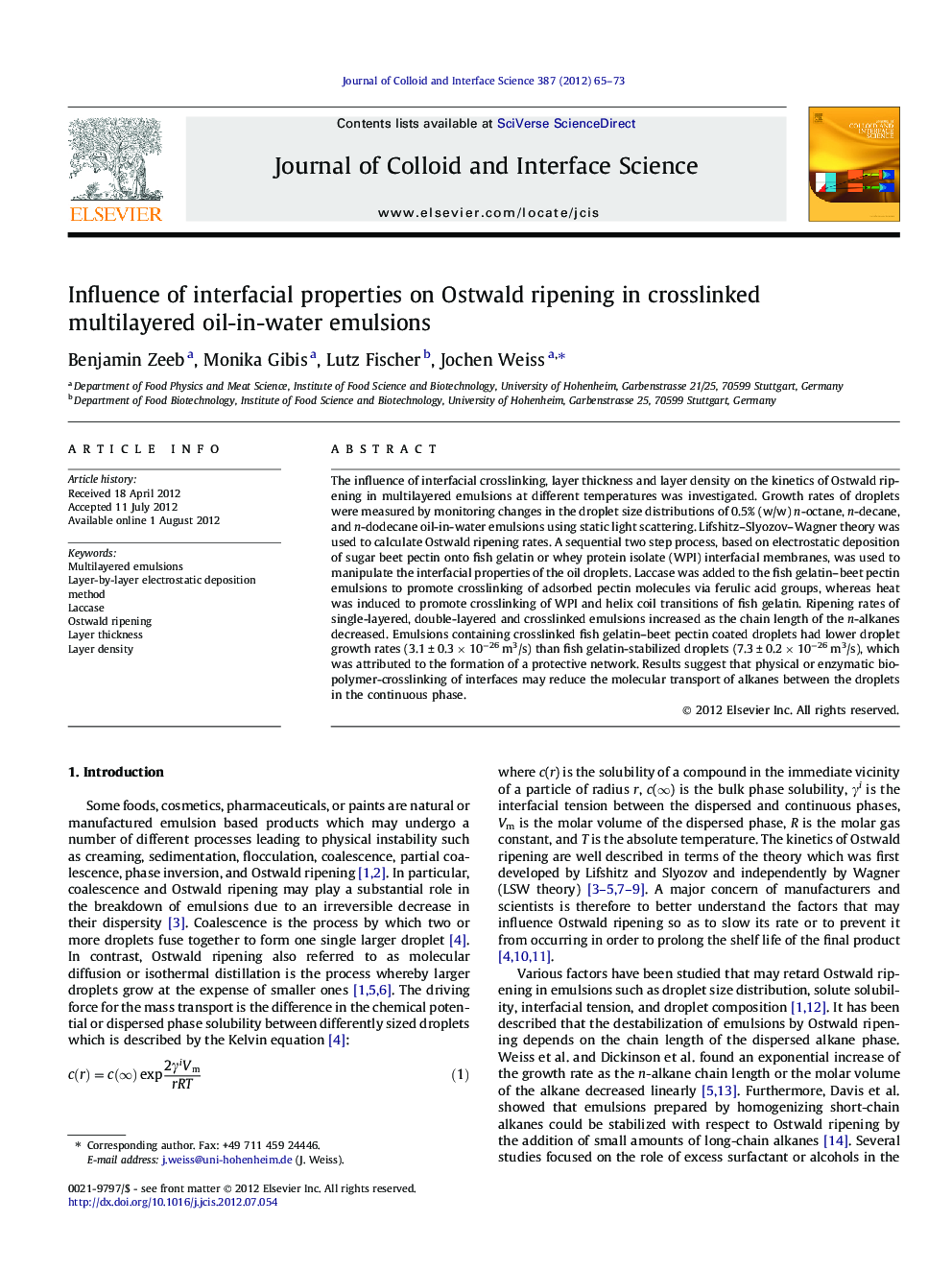| Article ID | Journal | Published Year | Pages | File Type |
|---|---|---|---|---|
| 608207 | Journal of Colloid and Interface Science | 2012 | 9 Pages |
The influence of interfacial crosslinking, layer thickness and layer density on the kinetics of Ostwald ripening in multilayered emulsions at different temperatures was investigated. Growth rates of droplets were measured by monitoring changes in the droplet size distributions of 0.5% (w/w) n-octane, n-decane, and n-dodecane oil-in-water emulsions using static light scattering. Lifshitz–Slyozov–Wagner theory was used to calculate Ostwald ripening rates. A sequential two step process, based on electrostatic deposition of sugar beet pectin onto fish gelatin or whey protein isolate (WPI) interfacial membranes, was used to manipulate the interfacial properties of the oil droplets. Laccase was added to the fish gelatin–beet pectin emulsions to promote crosslinking of adsorbed pectin molecules via ferulic acid groups, whereas heat was induced to promote crosslinking of WPI and helix coil transitions of fish gelatin. Ripening rates of single-layered, double-layered and crosslinked emulsions increased as the chain length of the n-alkanes decreased. Emulsions containing crosslinked fish gelatin–beet pectin coated droplets had lower droplet growth rates (3.1 ± 0.3 × 10−26 m3/s) than fish gelatin-stabilized droplets (7.3 ± 0.2 × 10−26 m3/s), which was attributed to the formation of a protective network. Results suggest that physical or enzymatic biopolymer-crosslinking of interfaces may reduce the molecular transport of alkanes between the droplets in the continuous phase.
Graphical abstractFigure optionsDownload full-size imageDownload high-quality image (133 K)Download as PowerPoint slideHighlights► Formation of multilayer o/w using the LbL method increases the stability against OR. ► Enzymatic crosslinking of pectin in multilayered o/w enhanced the stability to OR. ► Heat-induced transformations retards OR in WPI–pectin and gelatin–pectin coated o/w.
